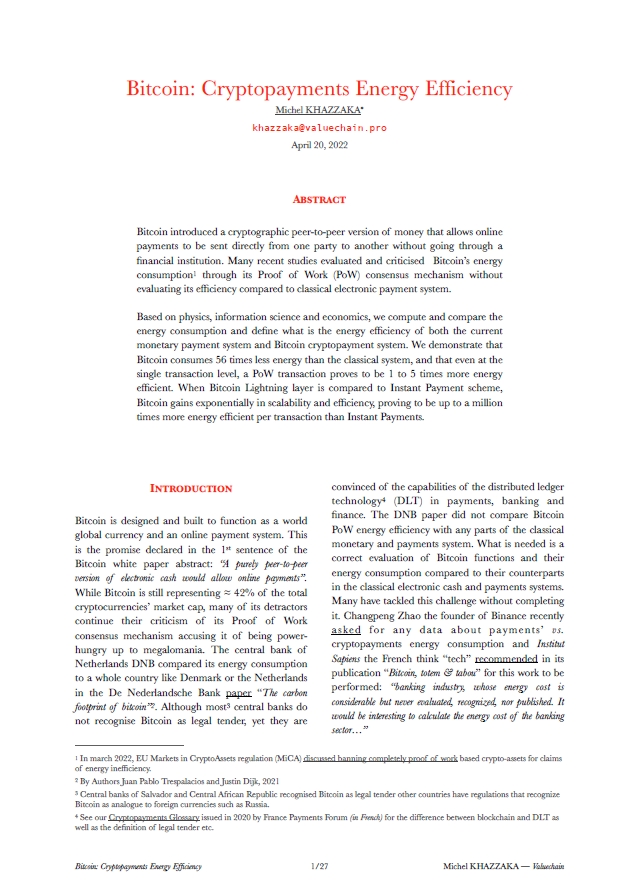Bitcoin introduced a cryptographic peer-to-peer version of money that allows online payments to be sent directly from one party to another without going through a financial institution. Many recent studies evaluated and criticised Bitcoin’s energy consumption through its Proof of Work (PoW) consensus 1 mechanism without evaluating its efficiency compared to classical electronic payment system.
Based on physics, information science and economics, we compute and compare the energy consumption and define what is the energy efficiency of both the current monetary payment system and Bitcoin cryptopayment system. We demonstrate that Bitcoin consumes 56 times less energy than the classical system, and that even at the single transaction level, a PoW transaction proves to be 1 to 5 times more energy efficient. When Bitcoin Lightning layer is compared to Instant Payment scheme, Bitcoin gains exponentially in scalability and efficiency, proving to be up to a million times more energy efficient per transaction than Instant Payments.




